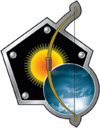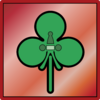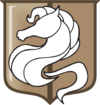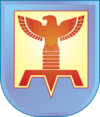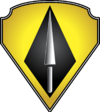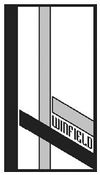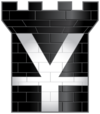Lyran Commonwealth Armed Forces
The Lyran Commonwealth Armed Forces were for centuries known as the best-equipped military in the Inner Sphere, thanks to the economic power of the Lyran Commonwealth. Unfortunately it also had a reputation for being "top heavy" both in terms of its equipment and officer corps. The infamous Social Generals of the LCAF were as well-dressed as they were incompetent, bungling from one disaster to the next, much to the dismay of the enlisted ranks. Luckily for the Lyran state, even during the dark days of the Succession Wars, its economic might meant the LCAF had the best of everything else that money could buy, and where tactical finesse was not available sheer brute force could often win the day.
In the years leading up to the Fourth Succession War, the alliance between the Commonwealth and Federated Suns culminating in the Federated Commonwealth would provide much-needed reforms to the Lyran military. As part of the Armed Forces of the Federated Commonwealth, the Lyran State Command became a far more effective fighting force, mirroring many of the traits of its Davion counterparts. Unfortunately, a series of events—most prominent among which were defeats suffered during the Clan Invasion and the creation of a separate Lyran Alliance—began to see these reforms reversed as a number of "old school" officers returned to power. With the end of the FedCom Civil War and formal dissolution of the FedCom state, the independent Lyran Alliance Armed Forces became something of a hybrid, mixing the traditions of the old LCAF with the lessons learned during their partnership with the Federated Suns.
Contents
Structure[edit]
High Command[edit]
The Archon is the Commander-in-Chief of the Lyran military as set down in the original Articles of Acceptance. Invested with absolute military authority, it was often expected that an Archon have prior military experience, though when necessary they may appoint a Commander Pro Tem to lead in their stead. Neither the Estates General nor the Commonwealth/Alliance Council have any formal say in military matters, but nevertheless the political power they wield can have tremendous influence on the military.[1][2]
Since the beginning, High Command has been responsible for formulating and executing the military policy of the Lyran state.[3][4][5] If necessary an Archon can go around High Command and issue orders directly, as is their prerogative, however going through the proper channels ensures a smoother flow of command and lessens the dangers which making unilateral choices can bring.[4][5] Until the FedCom merger, High Command consisted of the Archon, the General of the Armies, the heads of the sixteen military branches, and the commanders of the regional Military Districts and Theaters of Operation.[3] The LAAF High Command was streamlined by Katherine Steiner-Davion and split into a two-tiered system: an Inner Council consisting of the Archon, General of the Armies, and the five Margraves, and the full council, which included the branch heads, other regional commanders and the commander of the Lyran Intelligence Corps.[4][5]
Regional Commands[edit]
As of 3025, the Lyran Commonwealth was divided into 13 regions, each with their assigned forces and military commander. The four Military Districts were all completely within the borders of the Commonwealth. Known simply by their numbering, these Districts tended to have fewer units assigned to them. The nine Theaters of Operation were the primary lines of defense for the Commonwealth, lying along its borders with the Draconis Combine, Free Worlds League, and the anti-spinward Periphery. Averaging 30 parsecs long and 18 parsecs wide, Theaters were named after the location of the commanding officer's headquarters.[6] Theater Commanders also received the nonhereditary title of Margrave, allowing them to act in the capacity of a military governor.[7]
During the FedCom alliance the Lyran state adopted the regional command structure of the AFFC, but following its separation the LAAF returned somewhat to the previous command system under the Commonwealth. The five extent Provinces which made up the Alliance were divided into two, an interior region or Kerngebiete and an outward-facing Theater. Theater commanders were again granted the title of Margrave, but with more expanded political powers than before, and were considered senior to the generals commanding the interior. Because of their expanded authority, the Margraves were also under closer scrutiny by the JAG Corps, which had the authority to quickly remove one if they abused their powers.[8][9]
Military Departments[edit]
The complex bureaucracy of the Lyran military is divided into multiple departments, which operate semi-autonomously under the overall aegis of High Command. Often with overlapping responsibilities and enmeshed in politicking, the departments nevertheless work towards the good of the Lyran state, and the fact that they manage to function as well as they have means this structure has largely been maintained, both before and after the FedCom alliance.[10][11][5]
- Commonwealth Army/Alliance Army
The main combatant arm of the Lyran military, the Commonwealth Army encompasses all regular ground forces. The Army is composed of eight Corps and numerous sub-commands, principally divided into combatant and noncombatant:[11][5][12]
- BattleMech Corps - Consists of all BattleMech forces and often considered the cornerstone of the Army
- Armored Corps - Consists of all other combat vehicles, including tanks, hovercraft, and wheeled vehicles
- Infantry Corps - Consists of all infantry forces, including Jump Infantry and Special Forces units
- Artillery Corps - Controls all artillery pieces.
- Combat Engineer Corps - Responsible for construction and destruction duties by Combat Engineers.
- Supply Service/Supply Corps - Responsible for all battlefield movement of supplies and munitions; frequently integrates with the separate Quartermaster Corps
- Transportation Service/Transport Command - Oversees organization and assignment of JumpShips and DropShips assigned to ground forces.
- Signal Corps - Responsible for security and reliability of battlefield communication.
Other noncombatant commands of the Army include those responsible for its Technicians and all noncombat engineers.[11][5]
- Commonwealth Navy/Alliance Navy
The Commonwealth Navy is responsible for all spaceborne combat assets, including JumpShips, DropShips and WarShips. This often creates some overlap with the Army's Transport Command and the Transport Division, so various Archons have found ways over the years to clear up any confusion. During the Alliance era, all combat DropShips and JumpShips operating outside of Alliance space or in one of the five Theaters were under the Navy's jurisdiction.[12][5]
As of 3062, Fleet Admiral Lyn Hood commanded the navy.[13]
- Commonwealth Aerospace Forces/Alliance Aerospace Command
The Commonwealth Aerospace Force commands all aerospace and conventional fighter craft, their pilots and technicians fall under the Aerospace Command. It is further divided into three groups depending on their area of responsibility:[11][5][12]
- Planetary Command - Directs operations for all craft on planetary or system defense duty, including those assigned to planetary and provincial militias.
- Escort Command - Directs operations escorting spacecraft. Escorting supply convoys is often known as "Dolphin Duty," while "Beehive Duty" is the common name for accompanying combat DropShips and WarShips into battle.
- Wings of Combat - Directs units assigned to front-line duty, and primarily deployed for offensive operations only.
- Reserve Corps
The Reserve Corps is the department responsible for maintaining the military equipment, manpower, training, and supplies held back from active duty. The equipment is usually outdated, but is still in good condition. Units normally consist of either retired active duty personnel or part-time soldiers and specialists. Retired soldiers are required to remain in the Reserve Corps for five years and complete two weeks of military service per year; those who remain on the rolls longer can receive a monthly stipend. The Reserve Corps also oversees planetary garrisons.[11][5][12]
- Military Education
The Military Education Department is responsible for all aspects of training in the Lyran Military. This includes not only overseeing the many boot camps, but also more advanced training opportunities such as attending one of the realm's prestigious military academies. It frequently coordinates with the Army, Navy and Aerospace Commands towards its mission.[14][15][16]
- Replacement Depot Corps
The Replacement Depot Corps, also Known also as the Rep-Dep Corps, is responsible for maintaining supply depots across the Lyran state and ensuring all military units are in fighting shape. Rep-Dep is charged with forecasting supply needs, placing the appropriate orders with Quartermaster Command, and arranging shipment with the Transport Division. This includes the ferrying of replacement personnel to depleted units, using its own fleet of vessels if needed.[14][17][16]
- Judge Advocate General
The Judge Advocate General (or JAG) department is responsible for administering fair and objective laws for military personnel. Its ranks includes judges, lawyers, investigators and military police, all charged with ensuring that justice is done and all legal rights are upheld. JAG is also responsible for the administration of planets under martial law, including those recently captured from enemy Houses or that are deemed rebellious. In such cases, the JAG will appoint a Military Governor, who will attempt to foster an atmosphere that will win the cooperation of the local population.[14][17][16]
- Quartermaster Corps
The Quartermaster Corps is the department responsible for acquiring and distributing matériel to units throughout the Lyran state. They define the military's matériel needs, coordinate acceptance testing for new systems, and transfer supplies to units. The Quartermaster Corps have their own cadre of elite troops—seconded from other departments—tasked with testing and evaluating new weapons systems and equipment. The department can punish corporations who fail to meet their contractual obligations or deliver shoddy work, but given its close association with the military-industrial complex it's also the department most rife with corruption. This has made the Quartermaster Corps a near constant target by JAG.[14][17][16]
- Transport Division
The Transport Division controls the majority of the military's noncombat JumpShips and DropShips and operates a vast web of shipping lanes within the Lyran state. Transporting everything from troops to bulk goods, the Transport Division works closely with and sometimes subcontracts out to private interests to ensure that soldiers and matériel arrives where needed in a timely manner with minimum confusion.[14][17][16]
- Military Intelligence Division
The Military Intelligence Division, MID for short, is responsible for acquiring and analyzing information about enemy forces, from troop dispositions and personality quirks about their commanders. Several intelligence headquarters exist, with the Free Worlds League center located on Bolan, the Draconis Combine one located on Pandora, and the Periphery located on Virtue. The largest and overall command center is located within Asgard on Tharkad. Military Intelligence works closely with the civilian Lyran Intelligence Corps, sharing information and placing observers on each other's staffs.[14][9][18]
- Strategies and Tactics Division
The Strategies and Tactics Division is the think tank for the Lyran military, using data gathered by Military Intelligence to identify the enemy's weaknesses and formulate war plans. The division utilizes the most advanced computers available conduct war games and has been able to accurately predict an enemy's next move on many occasions. Strategies and Tactics has proven itself quite effective over the years with a reputation for innovative thinking and battle planning...which unfortunately was more often than not executed quite poorly by Lyran commanders on the battlefield.[12][17][9]
- Commonwealth Medical Corps/Alliance Medical Corps
The Commonwealth Medical Corps is responsible for all aspect of medical care within the Lyran military. Everything from providing Field Medics for battlefield treatment, to evacuating the wounded to MASH and orbital field hospitals, to running their own fleet of medical DropShips and JumpShips painted white and bearing the red Caduceus symbol. Because the Lyran military is one of the few remaining militaries that still respects the Geneva Conventions, its officers are prevented from interfering with medical treatment for enemy soldiers or forcing a doctor or nurse to do something against their medical judgment. This is partly because the Medical Corps is outside the normal chain of command, and so even a medic could ignore an order from a Marshal if it would endanger a patient in their care.[3][17][16]
- Administrative Section
The Administrative Section is responsible for tracking everything that happens within the Lyran military to every soldier, every piece of equipment, every munition, and every paycheck. Given the Herculean task of tracking all of this data, the department has occasionally made some truly stupendous mistakes—such as "forgetting" about huge supply depots only to be discovered latter like buried treasure—and has also been marred by corruption by unscrupulous officials seeking to line their pockets at the state's expense. Nevertheless, the Administrative Section has managed to accomplish its task more or less without fail through centuries of service.[3][17][9]
This department is also responsible for all noncombat communication within the Lyran military. Often this means working with ComStar, though a system of couriers are also used for messages too sensitive for the HPG network. Following their acquisition of black box technology, the Administrative Section has also maintained a separate Lyran Military Communications Network to transmit these confidential communiqués.[17][9]
- House Troops Liaison Division
The House Troops Liaison Division coordinates the administration and upkeep of the private military forces of the various noble families and corporations within the Lyran realm. While the law states that all private forces are independent of the Lyran military, the Household Troop Agreement of 2883 has allowed the Archon to traditionally maintain a tight control over them. The House Troops Liaison helps foster the illusion of independence of these private militias.[12][15][16]
- Mercenary Troops Liaison
The Mercenary Troops Liaison has the responsibility of coordinating the mercenary units hired by House Steiner. It acts as the paymaster for the units and, if the contract calls for it, provides supplies and matériel. The officers of this department try to ensure that mercenary units are treated with the same respect as the regular army troops. The department consists of many diplomats and negotiators who work to improve the state's relationships with the units it employs.[12][15][16]
- Com Guard and Star League Liaison
The Com Guard and Star League Liaison was created shortly after the Fourth Succession War, this department was initially charged with coordinating with the newly-revealed Com Guard units of ComStar. A combination intelligence agency and diplomatic corps, it was openly cooperative but secretly suspicious of the Com Guards, until the Clan Invasion suddenly prompted warmer relations. Following the creation of the Second Star League, this department's authority expanded to include the monitoring and coordination of any SLDF units operating within Lyran space.[15][16]
Doctrine[edit]
Throughout its history, the LCAF had an unfortunate (but not unearned) reputation for tactical simplicity and incompetence. Partly this was a problem of their own creation: allowing the higher ranks to be filled by people based not on their merit but on their lineage, their connections, or simply because they paid enough, led to obvious consequences. Even those officers who did manage to rise through skill and hard work often hamstrung themselves on purpose lest they highlight another's incompetence and so lose their position in the resulting political backlash. But House Steiner was also a victim of its own success. During the Star League years, Commonwealth factories were the best at turning out large numbers of heavyweight BattleMechs, and so focused on their production to the exclusion of smaller designs. Thus with the League's dissolution and the start of the Succession Wars, the Commonwealth found itself with very few factories producing lightweight 'Mechs, and those which it could were often unsatisfactory. With so few good designs in their inventory, Lyran officers rarely had the chance to utilize and discover the advantages of lighter 'Mechs, instead choosing to rely on the large, plodding machines they best understood. Enemy forces soon realized they could defeat Lyran units by outmaneuvering them with these same small, agile 'Mechs, to which the unimaginative Lyran officer could only think to respond by simply overwhelming the enemy with even more of their large 'Mechs, thereby increasing the need for them and continuing the cycle.[19][20][21]
While the 'Mech was the principal weapon of the LCAF, the military understood and practiced the concept of combined arms. During major offensive campaigns, each 'Mech regiment would be assigned at least three regiments of infantry, armor and artillery, creating a Combat Team. The Combat Team was identified by its parent 'Mech unit, whose commander would have overall authority of the whole unit, unless one of the other regimental commanders had vastly greater experience.[20] Alessandro Steiner was also responsible for introducing the concept of the Recon Lance as practiced by the Eridani Light Horse: combining a pair of aerospace fighter, a recon 'Mech, and one to two Packrat vehicles into one mixed unit. The success of these lances helped encourage other Lyran officers to experiment with other mixed-unit formations.[20][21] It was the partnership with House Davion however which brought about a greater appreciation and commitment to combined arms in the years leading up to the Fourth Succession War. Afterwards, with the formal announcement of the Federated Commonwealth, this increased with the wholesale adoption of the Regimental Combat Team concept.[22] Even after the realms began to split and many Lyran officers took on an anti-Davion mindset, this appreciation remained, with fully a third of all Lyran 'Mech regiments in 3062 part of an RCT.[8] Lyran 'Mech units follow the standard Inner Sphere organizational scheme, with some battalions and regiments reinforced to include an independent command lance or company respectively.[23]
The principal aerospace formation for the Lyran state has been the squadron, six aerospace or conventional fighters divided into three aero-lances. Technically, when assigned to support a 'Mech unit, one aero-lance would be assigned to each company, but in practice they are usually kept together and deployed at the discretion of the overall commander. When operating independently, aerospace forces will be grouped by wing and deployed from dedicated fighter transports, often with their own JumpShip support.[20][23]
Armor formations have played an important role in the Lyran military due to the state's ability to mass produce them and their offensive utility. Within the LAAF, most armor formations are categorized one of three ways. Sturmregimenter or storm regiments are typically assigned to siege operations, where their massive firepower makes up for any low mobility. Kampfregimenter are the opposite, using their mobility in a break with Steiner tradition to exploit weak points in the enemy's defenses and conduct lightning raids. Some combat regiments include VTOL assets, making them einsatzregimenter or mission regiments. And aufklärungregimenter or reconnaissance regiments are the lightest, often composed of hovercraft and VTOLs, to scout out the enemy's positions. Like with 'Mech regiments, LAAF armor regiments follow the same organization principles.[24]
Infantry formations also follow the standard structure as other Inner Sphere states, whether foot, motorized, mechanized or Jump Infantry. Special Forces regiments are considered the elite, with applicants having to serve for five years and undergo a battery of tests before admittance. However these units rarely fight together, with individual squads attached to other formations to perform unconventional missions. Likewise, even though the Federated Commonwealth was a strong advocate of battle armor, the independent LAAF did not put as much effort into their use. Lyran armored infantry are rarely deployed in large formations.[25]
Equipment[edit]
House Steiner has had a historical bias towards Heavy and Assault 'Mechs, with heavy lances forming the backbone of its 'Mech regiments. Favoring models produced within the realm, designs such as the Zeus, Banshee and Atlas were practically mainstays of many Lyran 'Mech units.[20][26] Indeed many Lyran officers considered anything below 50 tons to be a minor annoyance, and if such a 'Mech managed to "punch above their weight" then it was by pure luck.[21] One notable exception was the Commando which was well-liked by MechWarriors for its capability and reliability. In 3025 light lances had at least one Commando in their ranks, making it as common as other Light 'Mechs like the Stinger and Wasp. Medium 'Mechs were not much appreciated, resulting in an assortment of different designs used.[20] However, a tradition since the days of Craig Steiner has seen a pair of Griffin medium 'Mechs, piloted by members of the Archon's favorite unit, stand guard over them in the Throne Room on Tharkad.[27] Partnership with House Davion brought a host of new designs into the Lyran ranks, including the Hatchetman, Dervish and Victor. Losses suffered during the Clan Invasion required more 'Mechs be imported to replenish the ranks, including Free Worlds League 'Mechs like the Orion and Apollo. The use of foreign designs rankled many nationalistic Lyran officers, and with the LAAF's separation such imports were scaled back in favor of more native 'Mechs like the Bushwacker and Cobra and OmniMechs like the Hauptmann.[26]
The primary aerospace fighters of the LCAF were the Chippewa, Lucifer and Seydlitz, a fact which has continued under the LAAF. Partly this has been because the Alliance High Command has taken an ambivalent attitude to them, but partly also because Lyran aerospace forces took much fewer casualties during the Clan Invasion, making it less of a priority to upgrade the fleet. Trial runs for the new Eisensturm OmniFighters did begin in 3062 though, with plans for a massive upgrade program to begin in 3065.[20][26][23] The heavy damage taken by Lyran aerospace builders, combined with the success of the Eisensturm, drove the LCAF to embrace OmniFighters as a replacement for older frames. The Morgenstern first began replacing medium fighters in 3086,[28] while the lighter Sternensturm joined it in 3099.[29]
Organization[edit]
For the Lyran Commonwealth during the Succession Wars, there were generally two types of units: front-line troops that made up the Army, Navy and Aerospace Force, and local militias. Planetary militia units were generally garrison forces, almost always conventional troops consisting of armor, infantry and artillery regiments, though important planets might supplement these with some 'Mech forces. Under normal circumstances, the ranking military officer or noble would have command over a planet's militia, but under the auspices of the Reserve Corps all such forces were required to answer to the LCAF. This included being ordered to leave their world if needed, though the unpopularity of such an order made it rare.[14][20] Likewise, though noble families were allowed to maintain their own private militias, these too were subject to strict control by the House Troops Liaison department.[12]
Reforms introduced by the Federated Commonwealth included the implementation of the March Militias as found within the Federated Suns. When then Lyran Alliance succeeded, it maintained these units, renaming them "Regional Militias." Assigned to a given defensive zone (or Verteidigungzone) of several worlds, a Regional Militia is under the direct command of the provincial or Theater commander. Regional Militias mimic the structure of an RCT, a 'Mech regiment supported by five infantry and two armor regiments, with the change of any aerospace units integrated with the 'Mech regiment rather than remaining a separate command. They also generally have their own DropShips, but few are assigned dedicated JumpShip transports. With their equipment at the discretion of the Rep-Dep Corps, most Regional Militias will have outdated but well-maintained units.[30][31][32] Planetary militias, or "miliz", have remained the same as before. With each planet responsible for funding and training its own garrison forces, they generally consist of conventional forces and outdated equipment, and usually only the officers have had training from a Lyran academy.[30][32]
Another change brought about by the alliance with House Davion was the introduction of training battalions. Each one tied to a specific military academy, these battalions were designed to give students battlefield experience before transferring to a front-line unit. Equipment for these units was procured through grants to the schools, fundraising and tuition fees, and kept in top condition by a dedicated technical staff and the students themselves. Traditionalist academies such as the Nagelring refused to adopt the concept, but many of the smaller academies were more accepting, with six Lyran schools operating a cadre on the eve of the Clan Invasion. Unfortunately three of these were wiped out by the Clan invaders, and in the lead-up to the civil war many traditionalist Lyrans called for their disbandment.[30][33] After the war though the concept was maintained, with plans for more to be added.[32]
| Standard LAAF Regiment Nomenclature[34] | |||||
|---|---|---|---|---|---|
| Vehicle | Infantry | ||||
| AB - Artillery Battalion | AI - Armored Infantry | ||||
| ABY - Artillery Battery | BAB - Battle Armor Battalion | ||||
| AG - Artillery Group | CMR - Commando Regiment | ||||
| ATR - Artillery Regiment | FR - Front Recon | ||||
| AC(R) - Armored Cavalry (Regiment) | HI(R) - Heavy Infantry (Regiment) | ||||
| AG - Armored Grenadiers | IR - Infantry Regiment | ||||
| AR - Armor Regiment | JI(R) - Jump Infantry (Regiment) | ||||
| ARR - Armored Regiment | JR - Jump Regiment | ||||
| CR - Cavalry Regiment | LI(R) - Light Infantry (Regiment) | ||||
| CA - Combat Auxiliary | MPR - Military Police Regiment | ||||
| HA(R) - Heavy Armor (Regiment) | MDR - Mounted Rifles | ||||
| HAY - Heavy Artillery | MI(R) - Mechanized Infantry (Regiment) | ||||
| LA(R) - Light Armor (Regiment) | MR - Mechanized Rifles | ||||
| LT - Light Tank | MRT - Mechanized Regiment | ||||
| MG - Mounted Grenadiers | MTR - Motorized Regiment | ||||
| PR - Panzer Regiment | |||||
| RR - Recon Regiment | |||||
| SR - Scout Regiment | |||||
| TR - Tank Regiment | |||||
Deployment Status[edit]
In 2750 the LCAF had a strength of 52 BattleMech regiments and 40 WarShips. By 2765 this had increased to 90 'Mech regiments and 60 WarShips.[35] In 2784 it stood at 104 'Mech regiments, increasing to 122 two years later on the eve of the First Succession War (including 11 ex-SLDF regiments), along with 217 active WarShips.[36][37] A dozen 'Mech regiments had been destroyed outright, with the rest suffering heavy casualties, when the war ended in 2821, while the WarShip fleet was reduced to 18 vessels.[37][38]
In 3025, at the end of the Third Succession War, the LCAF constituted 75 'Mech regiments, third in total among the Great Houses, and numbered fifteen million men and women in active service.[19] With the heavy losses suffered during the Clan Invasion, and its secession from the Federated Commonwealth, the LAAF could count on 78 'Mech units of battalion-strength or larger in 3062.[26] By 3067 the LAAF had 73 'Mech regiments, the largest of any of the five Successor States.[9]
Line Units[edit]
- Active Corps
These brigades were active as of 3145.[39]
| Arcturan Guards | |||||
|---|---|---|---|---|---|
| The Arcturan Guards are one of the Lyran state's most ancient brigades, and though Arcturus has long since lost its place as the capital, the brigade has been one of the most prestigious in the military. The brigade draws at least a quarter of its troops from its homeworld, a tradition that Archon Katherine Steiner-Davion sought to remove before being met with fierce opposition by officer and enlisted soldier alike. | |||||
| Commonwealth Guards | |||||
|---|---|---|---|---|---|
| The Commonwealth Guards brigade was formed from units of the Alliance Guards who survived the Jihad. With most of their regiments tied to Bolan and Buena Provinces, the brigade is something like a regional unit for worlds bordering the Free Worlds League. | |||||
| Commonwealth Jaegers | |||||
|---|---|---|---|---|---|
| The Commonwealth Jaegers began life as the Alliance Jaegers before the surviving units were folded into the Lyran Reserves after the Jihad. After another shakeup in the early Dark Age, the brigade once again are known as Jaegers. They are a highly mobile brigade which practices a comprehensive combined arms doctrine. | |||||
| Donegal Guards | |||||
|---|---|---|---|---|---|
| The Donegal Guards predate the formation of the Lyran Commonwealth. Originally the defensive force of the Protectorate of Donegal, the brigade soon became a mainstay in the Lyran military. With a reputation for dogged determination, the well-supplied Donegal Guards has shown its loyalty to House Steiner and the Archon on many occasions. | |||||
| Lyran Guards | |||||
|---|---|---|---|---|---|
| The Lyran Guards were founded with the creation of the Lyran Commonwealth, as a bond of the three founding states. Drawing its personnel from across the Commonwealth, the unit was once regarded as the "working men" of the LCAF. Over the course of the Succession Wars, the brigade's prestige grew to the point it was surpassed in prestige only by the Royal Guards. Since their founding, the regiments of this brigade have served as the vanguard of Lyran forces in nearly every major conflict. | |||||
| Lyran Regulars | |||||
|---|---|---|---|---|---|
| Considered the less prestigious counterparts to the Lyran Guards and receiving less support, the Lyran Regulars have served as the solid backbone of the Lyran military, a reputation they have taken pride in over the years. Originally an auxiliary unit formed from an assortment of different sources to be sent off on hopeless missions, the Regulars have nevertheless earned their position by their willingness to use unorthodox tactics to achieve success. | |||||
| Royal Guards | |||||
|---|---|---|---|---|---|
| The best equipped and most prestigious brigade, the Royal Guards are charged with the defense of Tharkad and the Lyran government. The regiments which historically made up the Royal Guards represented the three founding members of the Lyran Commonwealth and recruited exclusively from their respective districts, allowing only the best soldiers into their ranks and warding off the social climbers which might otherwise plague such a unit. | |||||
- Inactive Corps
| Hesperus Guards | |||||
|---|---|---|---|---|---|
| The Hesperus Guards were the result of a clerical accident some time in the late Star League era. When the Ninth Tamar Marines were accidentally renamed to the Ninth Hesperus Guards, it resulted not in the Marines reclaiming their old name, but the formation of a new brigade to defend Hesperus II.[40] During the Dark Age, Vedet Brewer formed the First Hesperus Guards but did not revive the brigade, instead making them part of the Commonwealth Guards.[39] | |||||
| Odessa Regulars | |||||
|---|---|---|---|---|---|
| The Odessa Regulars were an attempt by the wealthy upper class of the world Odessa to engage in the military pageantry that they enjoyed without the risk of actual combat. Members of the brigade joined with the assumption that they would never see actual combat, causing a panic when one regiment was reassigned to the Combine border.[41] The brigade was destroyed during the Third Succession War. | |||||
| Skye Rangers | |||||
|---|---|---|---|---|---|
| Originally the army of the Federation of Skye, where the Skye Rangers were once synonymous with courage and resolution, by the thirty-first century, many in the Lyran military saw them as divisive for their ties and support of Free Skye and other independence movements. The Skye Rangers were dissolved after the Jihad, when its homeworld and most of its surviving members chose to join the Republic of the Sphere.[42] | |||||
| Tikonov Republican Guard | |||||
|---|---|---|---|---|---|
| The Tikonov Republican Guards were formed from the remnants of Capellan units stationed within the former Tikonov Commonality during the Fourth Succession War. Defecting along with their commander, Pavel Ridzik, the Guards served as the garrison of the short-lived Tikonov Free Republic before being absorbed into the Federated Commonwealth. A combination of desertion, Operation Guerrero and the civil war saw the brigade destroyed. | |||||
| Winfield's Brigade | |||||
|---|---|---|---|---|---|
| Winfield's Brigade was created as a mixed-unit formation by Alessandro Steiner pattered after the famous Eridani Light Horse mercenary unit. Using medium-weight 'Mechs with high mobility and officers from The Stealths, the brigade became a premier unit in the LCAF. It was destroyed by Clan Jade Falcon during the Clan Invasion. | |||||
| York Regulars | |||||
|---|---|---|---|---|---|
| The York Regulars were originally the house troops of the powerful Duke of York. Following a failed revolt attempt, the troops were forcibly incorporated into the LCAF, where they served as sink units during the Star League and early Succession Wars eras.[43] The brigade was destroyed during the Third Succession War. | |||||
Regional Militias[edit]
All Militias use pale blue with region-specific highlights. Derived from the March Militia system used during the time of the Federated Commonwealth, these RCTs are drawn from the best of the militia troops from each world in their province or theater.
- Province Militias
The Province Militias are the interior garrison forces of the LAAF. They take their name from the name of the Province's capital world.
- Buena Province Militia (Alarion Province Militia prior to 3081)[44]
- Coventry Province Militia
- Bolan Province Militia (absorbed into Donegal Province Militia by 3145)[45]
- Skye Province Militia (disbanded by 3081)[46]
- Donegal Province Militia
- Theater Militias
The Theater Militias are militia units used to provide border defenses. Like the Province Militias, they take their name from the capital world of the theater that they're responsible for protecting.
- Timbuktu Theater Militia
- Melissia Theater Militia
- Cavanaugh Theater Militia (disbanded by 3145)[47]
- Freedom Theater Militia (disbanded by 3081)[46]
- Arc-Royal Theater Militia
Training Units[edit]
- Buena War College Training Battalion
- Coventry Training Battalion
- Pandora College Training Battalion (became the Pandora Cavaliers, destroyed by the Clans)
- Nagelring Training Battalion (destroyed during the Jihad)[48]
- Royal New Capetown Training Battalion
- Somerset Academy Training Battalion (destroyed by the Clans)
- Sanglamore Training Battalion (absorbed by the Twenty-second Skye Rangers during the Jihad)[48]
- Blackjack (destroyed by the Clans)
- Tamar (destroyed by the Clans)
- Tikonov (deserted during Operation Guerrero)
- Sarna (deserted during Operation Guerrero)
Mercenaries[edit]
Starting with the rule of Elizabeth Steiner, the Lyran state with its tremendous wealth has been a prodigious employer of mercenary units, not least to make up for any tactical deficiencies in the regular armed forces. Unlike in other realms where they are viewed with scorn, the state often paid mercenaries higher wages and provided greater compensation benefits than elsewhere, and Lyran citizens often treat mercenaries as just another kind of businessmen.[30][49] Indeed, for most of the Succession Wars Galatea was known as the Mercenary's Star until that honor was transferred to Outreach in the 3030s. Afterwards the world became a haven for less-reputable mercenaries denied access to the Mercenary Review and Bonding Commission, though following the formation of the Chaos March business began to pick up again and the MRBC opened a satellite branch on Galatea to help with enforcing regulations.[30]
Military Academies[edit]
Under the Lyran Commonwealth, children were regularly tested during the course of their educational career and, upon graduating from their third-level schooling, were given a choice if they wished to pursue a career in the LCAF.[50] For most, it would begin by attending one of the thousands of boot camps spread across the realm which accepted millions of recruits into the LCAF. Basic training consisted of a four-month program to teach recruits the discipline and skills needed to follow orders and kill their enemies with a variety of weapons. Afterwards, they would receive an additional six months of advanced training in their specialty, whether it be 'Mech maintenance or combat engineering.[10] If chosen for one of the prestigious military academies, the recruit could attend one immediately or continue their education at a general university, with the expectation they would enroll in the local ROTC and serve an extended tour of duty upon graduation.[50] Of course, the quickest way into an academy was for someone to make a "hefty donation" to the right people, with such corruption being endemic despite the Archons' best efforts to squash it.[21] In 3025, there were ten such military academies, most of which provided some sort of specialization in a given field.[50]
By 3062 military education in the Lyran state had undergone major changes, least of all from the destruction of several military academies during the Clan Invasion. Under the Military Service Act, all Lyran citizens were required to serve five years in either the military or suitable public service. With the personnel and matériel losses from both the Clan Invasion and the secession of the LAAF, standards were lowered so that the pool of recruits could be expanded, with the addition of political screening ensure troops were reliable to the new regime. For most, a recruit's military career would begin at one of the scores of remaining boot camps, where they would undergo ten weeks of basic training in the skills necessary for their survival; if any recruits showed the aptitude during this period, they could be invited to attend one of the nine military academies, all of which were now state-run.[51]
Most academy cadets though would have earned their way through the National Service testing conducted during their schooling, with an unofficial "donation" sometimes being the difference between a prestigious 'Mech posting or assignment to the infantry. Each academy offered a four-month basic training program, after which cadets attended advanced schooling for their Military Occupation Specialty, which could last anywhere from two months to four years depending on the MOS. Afterwards, a few promising individuals may continue in a Field of Study for officer training, but for most graduation will lead to one of three outcomes. Cadets who pass the final examinations will be assigned to a front-line unit according to their results, with exceptional graduates given the opportunity to pick and choose. Cadets who achieved marginal results but would otherwise be expected to pass with additional training could be "back-classed" and made to repeat their training. Those cadets who subsequently failed again or who did not show the ability to improve were carted off to a militia unit to serve out their career ignobly.[52][53]
This same training regimen was maintained after the end of the FedCom Civil War, though again with a much reduced education system: by 3067 there were fifty boot camps spread across the Alliance, and seven surviving military academies.[32]
| Federated Commonwealth Military Academies | |
|---|---|
| Alarion Naval Academy
Founded in 3060, the Alarion Naval Academy was created by the Lyran Alliance following the reintroduction of WarShips to the Inner Sphere, taking some of the burden off of other Lyran flight schools to crew these vessels. The academy benefited from the fact that Alarion was home to the Port Sydney Naval Shipyards. Unfortunately Alarion was destroyed by orbital and nuclear bombardment during the Jihad and with it the Naval Academy. | |

|
Blackjack School of Conflict
The Blackjack School of Conflict was the only privately-run military academy in the Lyran Commonwealth, and was known for producing graduates with a flair for corruption, despite being excellent warriors otherwise. The Blackjack Training Battalion, one of several built by the Federated Commonwealth, was destroyed by Clan Jade Falcon during the Clan Invasion. Although the academy's facilities were later razed by Clan Steel Viper,years later, the Falcons would reopen the school as Jade Falcon School of Conflict on Blackjack. |
| Coventry Military Academy
Committed exclusively to MechWarrior training, the Coventry Military Academy was a small institution which enjoyed a strong relationship with Coventry Metal Works. After the Lyran secession, the Academy's cadets would see action fighting the Jade Falcons in 3058 as well as becoming mired in the Civil War some years later. The academy would be upgraded with state-of-the-art equipment when it was reopened following the Falcons' attack. | |

|
The Flight Academy of Thorin
The Flight Academy of Thorin was founded in 2832, and specialized in aerospace pilots and DropShip crews. The facilities on Thorin were damaged in the Succession Wars, and as making the necessary repairs was deemed too expensive the school was allowed to limp on. Instead the Lyran state chose to build the Alarion Naval Academy as a replacement and began transferring students and equipment there once it was opened. The school closed permanently in 3063 as scheduled. |

|
The Military Academy of Somerset
The Military Academy of Somerset was a small institution dedicated exclusively to the training of MechWarriors and aerospace pilots. The Somerset Academy Training Battalion, built with assistance from the Federated Commonwealth, was destroyed by Clan Jade Falcon during the opening stages of the Clan Invasion. |

|
Melissa Steiner Martial Academy of Bolan
The MSMA was originally a training facility for local militia, but after the War College of Tamar was destroyed during the Clan Invasion it was decided to upgrade the facility in 3053 to fill in the gap. The school formally opened in 3055, renamed from the Bolan Military Academy in honor of the recently-assassinated Melissa Steiner. The MSMA was only able to instruct conventional ground forces until the first class of MechWarriors graduated in 3069. |
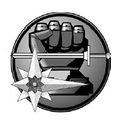
|
The Nagelring on Tharkad
The Nagelring is the Lyran Commonwealth's oldest and most prestigious military academy. Originally, the Nagelring was a Star League facility, which was taken over by House Steiner after the Exodus of General Kerensky's SLDF. To the surprise of House Steiner, many of the former Star League instructors decided to stay on Tharkad. The Nagelring trains officers in all branches of the LCAF, including DropShip and JumpShip crews. It is known for its extensive variety of teaching aids such as Chameleon training 'Mechs and Jenny aerospace fighters. Some of the most distinguished military leaders, including Aleksandr Kerensky, Katrina Steiner, Morgan Kell and Victor Ian Steiner-Davion, graduated at the Nagelring. |
| Pandora College of Military Sciences
The Pandora College of Military Sciences was formerly reserved for training the crews of DropShips. After the Fourth Succession War, it was expanded to almost all areas of military training. The PCMS and its training battalion were overrun by the Jade Falcons in 3064. | |
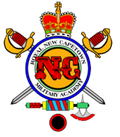
|
The Royal New Capetown Military Academy
The Royal New Capetown Military Academy is a military school with a past troubled by the racism of its home planet New Capetown. Reforms during the Federated Commonwealth era seemed to ease this, but local hatreds were then directed towards the Clans. In the years leading up to the FedCom Civil War, these divisions took on a political nature. The Academy focuses on ground-based combat, from conventional units to battle armor to 'Mechs. Both the school and training battalion survived the FedCom Civil War and Jihad. |
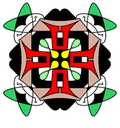
|
Sanglamore Academy
Sanglamore Academy on Skye is another former Star League academy and is considered the twin of the famed Nagelring on Tharkad. However, the academy was severely damaged during House Kurita's attempt to invade Skye. Since then, the facility was no longer able to train naval officers. Instead, Sanglamore concentrated its efforts on the best possible MechWarrior training and education of the LCAF's warrant officers. However, Sanglamore is heavily influenced by Federation separatist sentiment. This secures a high percentage of LIC personnel on campus. In addition, many of its graduates try to join the Skye Rangers. Anastasius Focht, when he was still known as Frederick Steiner, graduated at Sanglamore.[54] |

|
War College of Buena
The War College of Buena was founded in 3020 on Buena. The academy was well-funded by the Federated Commonwealth, with excellent technical courses and respected MechWarrior and aerospace pilot training programs. A training battalion was created shortly thereafter, and both it and the school survived relatively unscathed through the Civil War and Jihad. |

|
War College of Tamar
The War College of Tamar was reopened in 3025, after it had been destroyed by DCMS forces during one of House Kurita's invasion attempts during the Third Succession War, to train MechWarriors and other ground personnel. The reconstruction of the facility began 3017, almost a hundred years after the Kurita forces were pushed off-world, with the first cadets of the restored academy graduating in 3028. Among the War College's graduates was Galen Cox, future aide to Victor Steiner-Davion.[55] The College and its training battalion were destroyed during the Clan Invasion by Clan Wolf in 3051. |
Ranks[edit]
The Brandenberg Edicts of 2413 established the rank system for the LCAF from 2413 through the Fourth Succession War. Following the formation of the Federated Commonwealth, the rank systems of both the Lyran Commonwealth and the Federated Suns were merged into a single structure. After the dissolution of the Federated Commonwealth, the Lyran command structure was reverted to that of the Lyran Commonwealth (with few changes) as a matter of national pride.[56][57][58]
| LCAF Rank | LAAF Rank | Insignia | ||
|---|---|---|---|---|
| Enlisted Personnel | ||||
| Private | Recruit | |||
| - | Private | |||
| Private, First Class | Private, First Class | |||
| Corporal | Corporal | |||
| Senior Corporal | Senior Corporal | |||
| Sergeant | Sergeant | |||
| Staff Sergeant | Staff Sergeant | 
| ||
| Sergeant Major | Sergeant Major | 
| ||
| Staff Sergeant Major | Staff Sergeant Major | 
| ||
| Senior Sergeant Major | Senior Sergeant Major | 
| ||
| Warrant Officers | ||||
| Warrant Officer | Warrant Officer | |||
| Warrant Officer First Class | Warrant Officer First Class | |||
| Senior Warrant Officer | Senior Warrant Officer | |||
| Chief Warrant Officer | Chief Warrant Officer | |||
| Junior Officers | ||||
| - | Cadet | 
| ||
| Leutnant | Leutnant | 
| ||
| First Leutnant | First Leutnant | 
| ||
| Hauptmann | Hauptmann | 
| ||
| Kommandant | Kommandant | 
| ||
| Hauptmann-Kommandant | Hauptmann-Kommandant | 
| ||
| Senior Officers | ||||
| Leutnant-Colonel Leutnant-Kaptain |
Leutnant-Colonel Leutnant-Kaptain |
|||
| Colonel Kaptain |
Colonel Kaptain |
|||
| Leutnant-General Leutnant-Kommodore |
Leutnant-General Leutnant-Kommodore |
|||
| Hauptmann-General Kommodore |
Hauptmann-General Kommodore |

| ||
| Kommandant-General Hauptmann-Kommodore |
Kommandant-General Hauptmann-Kommodore |

| ||
| General Admiral |
General Admiral |

| ||
| General of the Armies Fleet Admiral |
General of the Armies Fleet Admiral |

| ||
See Also[edit]
Gallery[edit]
References[edit]
- ↑ Field Manual: Lyran Alliance, pp. 14, 16
- ↑ Handbook: House Steiner, p. 103
- ↑ 3.0 3.1 3.2 3.3 House Steiner (The Lyran Commonwealth), p. 117
- ↑ 4.0 4.1 4.2 Field Manual: Lyran Alliance, p. 16
- ↑ 5.0 5.1 5.2 5.3 5.4 5.5 5.6 5.7 5.8 Handbook: House Steiner, p. 105
- ↑ House Steiner (The Lyran Commonwealth), p. 118
- ↑ House Steiner (The Lyran Commonwealth), p. 89
- ↑ 8.0 8.1 Field Manual: Lyran Commonwealth, pp. 20–21
- ↑ 9.0 9.1 9.2 9.3 9.4 9.5 Handbook: House Steiner, p. 107
- ↑ 10.0 10.1 House Steiner (The Lyran Commonwealth), p. 114
- ↑ 11.0 11.1 11.2 11.3 11.4 Field Manual: Lyran Commonwealth, p. 17
- ↑ 12.0 12.1 12.2 12.3 12.4 12.5 12.6 12.7 House Steiner (The Lyran Commonwealth), p. 116
- ↑ Field Manual: Lyran Alliance, p. 17
- ↑ 14.0 14.1 14.2 14.3 14.4 14.5 14.6 House Steiner (The Lyran Commonwealth), p. 115
- ↑ 15.0 15.1 15.2 15.3 Field Manual: Lyran Alliance, p. 18
- ↑ 16.0 16.1 16.2 16.3 16.4 16.5 16.6 16.7 16.8 Handbook: House Steiner, p. 106
- ↑ 17.0 17.1 17.2 17.3 17.4 17.5 17.6 17.7 Field Manual: Lyran Alliance, p. 19
- ↑ Field Manual: Lyran Alliance, p. 20
- ↑ 19.0 19.1 House Steiner (The Lyran Commonwealth), p. 109
- ↑ 20.0 20.1 20.2 20.3 20.4 20.5 20.6 20.7 House Steiner (The Lyran Commonwealth), p. 122
- ↑ 21.0 21.1 21.2 21.3 House Steiner (The Lyran Commonwealth), p. 128
- ↑ 20 Year Update, p. 16
- ↑ 23.0 23.1 23.2 Field Manual: Lyran Alliance, p. 25
- ↑ Field Manual: Lyran Alliance, p. 26
- ↑ Field Manual: Lyran Alliance, p. 27
- ↑ 26.0 26.1 26.2 26.3 Field Manual: Lyran Alliance, p. 24
- ↑ House Steiner (The Lyran Commonwealth), p. 89
- ↑ Technical Readout: 3085, p. 130
- ↑ Technical Readout: 3145 Lyran Commonwealth, p. 48
- ↑ 30.0 30.1 30.2 30.3 30.4 Field Manual: Lyran Alliance, p. 22
- ↑ Field Manual: Lyran Alliance, p. 108
- ↑ 32.0 32.1 32.2 32.3 Handbook: House Steiner, p. 108
- ↑ Field Manual: Lyran Alliance, p. 121
- ↑ Field Manual: Lyran Alliance p. 43: Standard LAAF Nomenclature.
- ↑ Historical: Liberation of Terra Volume 1, p. 49: "Member State Troop Strength"
- ↑ First Succession War, p. 119
- ↑ 37.0 37.1 First Succession War, p. 14
- ↑ First Succession War, p. 121
- ↑ 39.0 39.1 Field Manual: 3145, pp. 123-131
- ↑ Field Report 2765: LCAF, p. 12
- ↑ Field Report 2765: LCAF, p. 16
- ↑ Field Manual: 3085, p. 103
- ↑ Field Report 2765: LCAF, p. 20
- ↑ Jihad: Final Reckoning, p. 61: "The Jihad in Review"
- ↑ Field Manual: 3145, p. 131
- ↑ 46.0 46.1 Field Manual: 3085, p. 167
- ↑ Field Manual: 3145, p. 271 - Lyran Commonwealth map
- ↑ 48.0 48.1 Field Report: LAAF, p. 16
- ↑ Handbook: House Steiner, p. 111
- ↑ 50.0 50.1 50.2 House Steiner (The Lyran Commonwealth), p. 124
- ↑ Field Manual: Lyran Alliance, p. 35
- ↑ Field Manual: Lyran Alliance, p. 36
- ↑ Field Manual: Lyran Alliance, p. 37
- ↑ House Steiner (The Lyran Commonwealth), p. 123: Sanglamore on Skye
- ↑ Masters and Minions: The StarCorps Dossiers, p. 207: Galen Cox
- ↑ House Steiner (The Lyran Commonwealth), p. 110
- ↑ Field Manual: Lyran Commonwealth, p. 30
- ↑ Handbook: House Steiner, pp. 112–113





